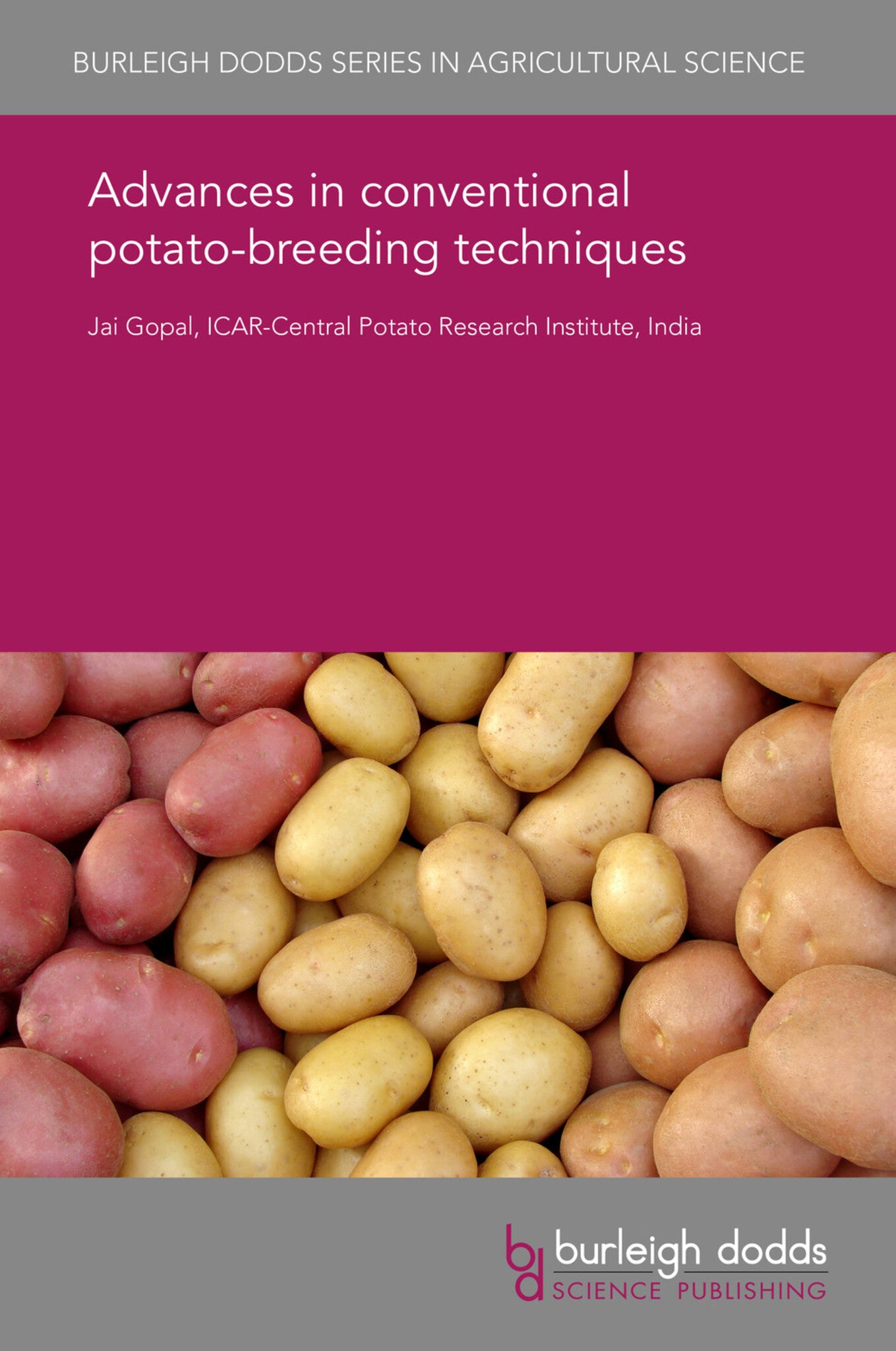We're sorry. An error has occurred
Please cancel or retry.
Advances in conventional potato-breeding techniques
Regular price
£25.00
Sale price
£25.00
Regular price
£25.00
Unit price
/
per
Sale
Sold out
Re-stocking soon
Potato is highly heterozygous. In order to maintain productivity, improved potato varieties are therefore developed by inter-mating desired parental lines and selecting superior clones from the pro...
Read More

Some error occured while loading the Quick View. Please close the Quick View and try reloading the page.
Couldn't load pickup availability
- Format:
-
08 August 2018

Potato is highly heterozygous. In order to maintain productivity, improved potato varieties are therefore developed by inter-mating desired parental lines and selecting superior clones from the progeny. Since potato is vegetatively propagated, any selected genotype can be fixed with all its intra- and inter-locus interactions responsible for phenotypic expression, and multiplied for commercial cultivation if desired. Recent advances in molecular breeding provide opportunities for rapid genetic gain (Slater et al. 2014a). Nevertheless, phenotypic selection remains the common practice in conventional potato-breeding programmes. Nearly all new varieties of potato still emerge from a process free from use of molecular technologies. This chapter reviews the progress and advances made in phenotypic selection techniques of conventional potato breeding. The role of molecular approaches in improving phenotypic selection is also described briefly.

Price: £25.00
Publisher: Burleigh Dodds Science Publishing
Imprint: Burleigh Dodds Science Publishing
Series: Burleigh Dodds Series in Agricultural Science
Publication Date:
08 August 2018
ISBN: 9781786763679
Format: eBook
BISACs:
TECHNOLOGY & ENGINEERING / Agriculture / Sustainable Agriculture, Botany and plant sciences, TECHNOLOGY & ENGINEERING / Agriculture / Agronomy / Crop Science, Sustainable agriculture, Agronomy and crop production

1 Introduction 2 Parental line selection 3 Progeny selection 4 Improving the speed and success rate of selection 5 Summary 6 References



